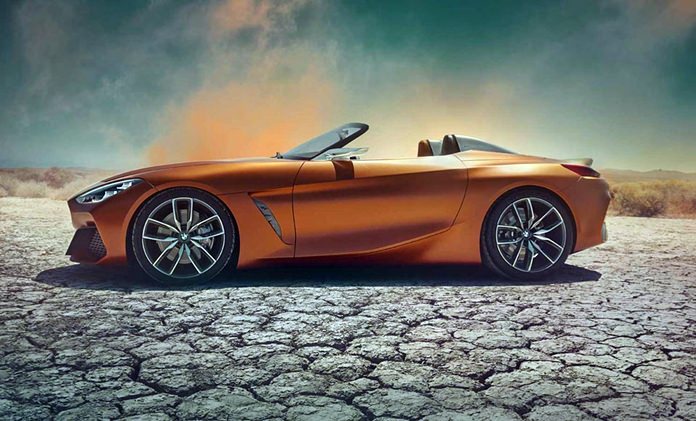
The new Toyota Supra is one of the products of a 2012 deal between Toyota and BMW to develop a pair of sports car twins. By using the same basic set of parts, this joint effort would give BMW a replacement for its Z4, out of production since 2016 and provide a coupe to refresh the Supra name. Both will be made in a factory in Graz, Austria.
Toyota’s Masayuki Kai, Supra assistant chief engineer said. “Without BMW we could not revive the Supra, and this also applies vice-versa for BMW.”
The new Toyota Supra is mechanically identical to the BMW Z4. “BMW’s straight six engine … very, very nice engine,” Kai adds.
Supra production doesn’t begin until the first quarter of next year and it is scheduled to go on sale in the second half of 2019.
The car will be the first road car to wear GR (for Gazoo Racing) branding. This Toyota sub-brand is tasked with co-ordinating all kinds of racing, where the Gazoo Racing name is already well known, plus creating road cars like the new Supra. The objective is to make GR to Toyota what AMG is to Mercedes-Benz and BMW.
Toyota has not revealed any official performance figures for its new Supra, but expect 220 kW and 450 Nm and return zero to 100 km/h in well under five seconds.
Toyota’s engineers claim the Supra’s body structure is as stiff as the carbon fiber Lexus LF-A and that its center of gravity is lower than the current GT86 sports car, and that its front:rear weight distribution is a BMW-like 50:50.
The Supra interior features a lot of BMW parts.
Some will find the idea of a Toyota-BMW collaboration hard to swallow. Diehard Supra enthusiasts may sneer at the new model and delight in calling attention to visible signs of its mixed heritage.
But although the new Supra is no purebred, driving pleasure is what it delivers. And that’s what really makes or breaks a sports coupe, no matter what badge it wears.
The new Supra is a two-seater, breaking from tradition. Every one of the four previous generations, from 1978 to 2002, featured a 2+2 passenger arrangement. There are two reasons for the change. First, Supra chief engineer Tetsuya Tada wanted a compact footprint for excellent agility, so the distance between the car’s front and rear axles is shorter than all the old models. Second, Toyota already makes a sporty 2+2 coupe, the GT86 (which is cloned with the Subaru GRZ).
This type of cooperation seems to be the way of the automotive world – Mazda and Fiat with the MX-5, Toyota and BMW’s Supra and Toyota and Subaru with the GT 86. I can’t say I like it.
 |
 |





